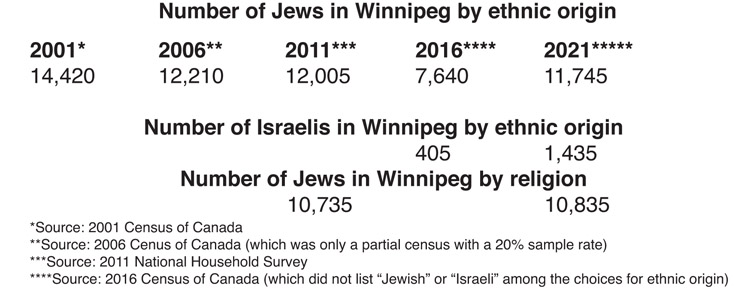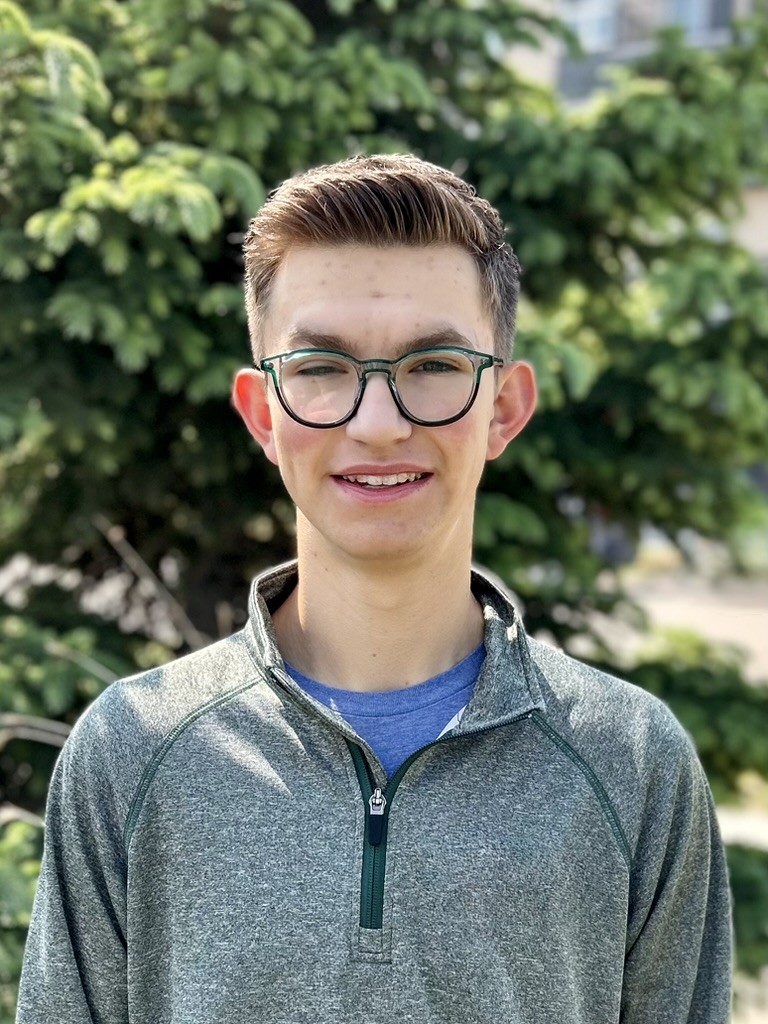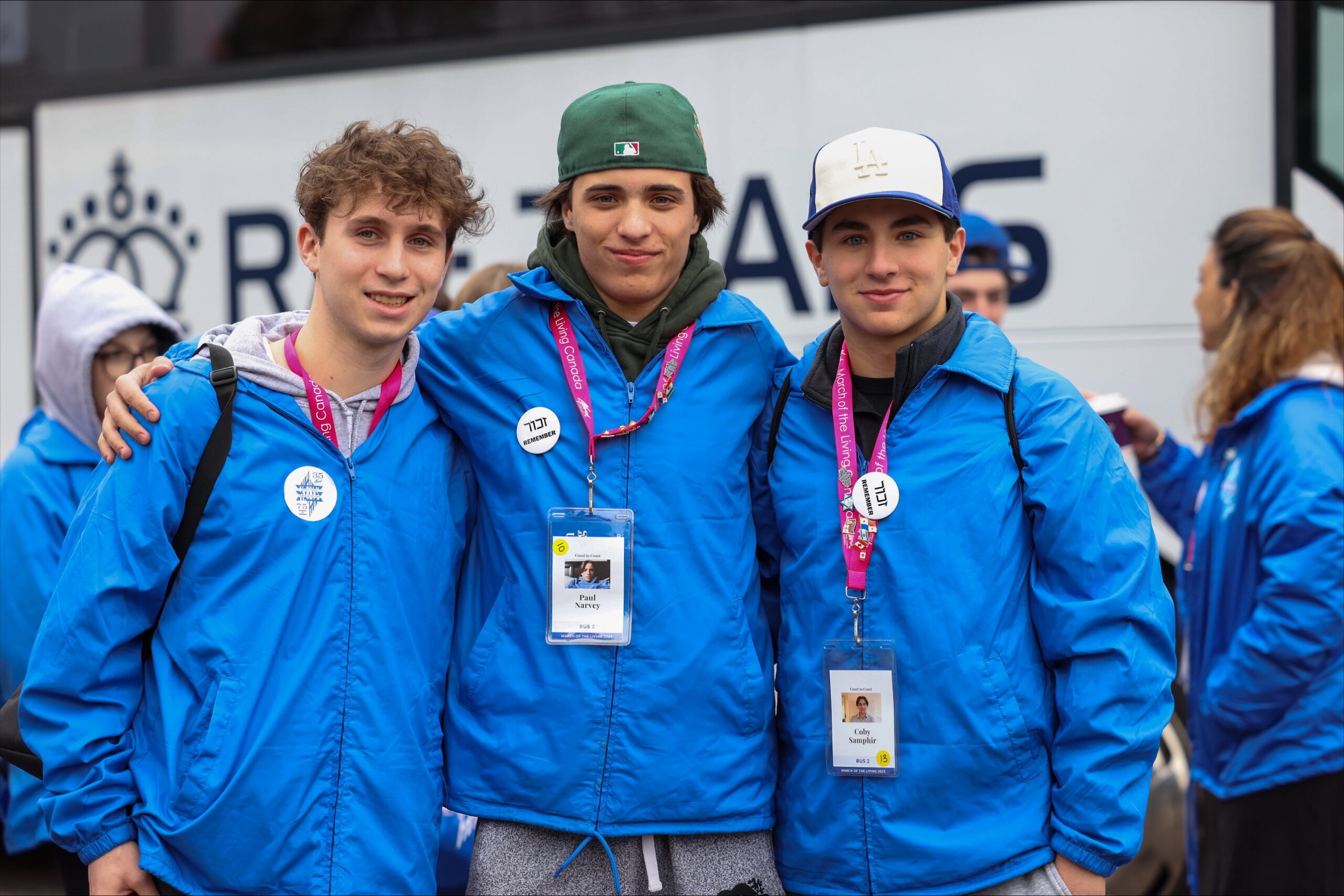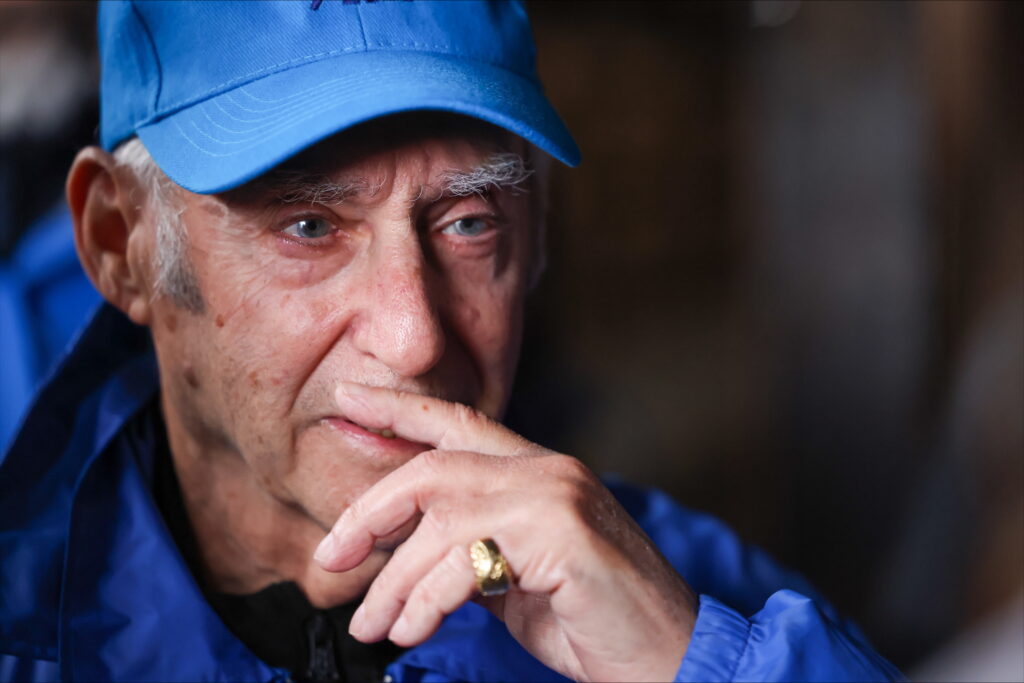Local News
Jewish population of Winnipeg shows slight increase in past 10 years – but 2021 census does not give definitive answers as to what the size of our Jewish population really is
By BERNIE BELLAN The number of individuals in Winnipeg who report that their ethnic origin is Jewish has declined somewhat from the number reported in the 2011 National Household Survey (which was the last reliable report on the ethnic and religious composition of Canada produced by StatsCan).
However, set against the decline in the number of Winnipeggers who reported their ethnic origin as Jewish was a marked increase in the number that reported their ethnic origin was Israeli.
The number of individuals who reported their religion was Jewish also showed a very slight increase from 2011 to 2021.
Those are some of the most significant findings from the latest release of detailed information from the 2021 census, which came on October 26, when StatsCan released a whole trove of documents about immigration and ethnicity – with statistics about religion at the very end of the document release.
According to the 2021 census, 11,745 individuals in Winnipeg reported their ethnic origin as Jewish. In 2011 the figure was 12,005. However, considering that 1,435 individuals reported their ethnic origin was Israeli (as opposed to a total of 340 in 2011), when you add the two figures together the total comes to 13,180.

As for religion, the number of Winnipeggers who said their religion was Jewish stood at 10,740 in 2011. The 2021 census reported the number as 10,835, an increase of 95.
We have been waiting anxiously for the results of the 2021 census ever since results from the 2016 census were so wildly inconsistent with all previous census results when it came to showing that the number of Jews, not only in Winnipeg, but everywhere in Canada, had declined precipitously.
As we have been reporting repeatedly ever since results of the 2016 census were published, the reason for what were considered aberrant results in the 2016 census was that, for the first time, “Jewish” was not listed among the 20 choices for ethnic ancestry in that census. Instead, one would have had to write in “Jewish” as an answer. As a result, even StatsCan conceded that the low number of individuals who responded that their ethnic origins were Jewish was unrealistically low.
In the 2016 census also, the likelihood is that a number of respondents who might otherwise have responded “Jewish” if it had been given in the list of examples of ethnic origin, instead likely chose “Canadian,” since Canadian was one of the 20 examples listed.
As a report from StatsCan noted, “After the 2016 Census, concerns were raised that changes to the list of examples of ethnic and cultural origins included as part of the question were affecting response patterns. Concerns were also raised about the wordiness of the question, which made it difficult for certain people to read and respond to the question.”
StatsCan went on to explain that “respondents were more likely to report an origin when it was included in the list of examples and, conversely, less likely to report an origin if it was not included in the list.”
As a result, StatsCan made major changes to how ethnic origin was tabulated in the 2021 census. The question that was asked was the same as what had been asked in previous censuses: “What were the ethnic or cultural origins of this person’s ancestors?”
That question was followed by a further explanation:
“Ancestors may have Indigenous origins, or origins that refer to different countries, or other origins that may not refer to different countries.
But the 2021 census, which was required to be filled out online, actually gave a link to “a list of over 500 examples of ethnic and cultural origins,” of which both “Jewish” and “Israeli” were among the choices.
One might well wonder though whether many recent immigrants to Winnipeg who might be considered ostensibly Jewish might also have filled in different ethnic origins, especially individuals with Eastern European roots. (There was only room for one answer to the question about ethnic origins.)
But then we run up against the issue of the relatively low number of individuals who said their religion was “Jewish” in the 2021 census.
The religion question that appeared in the 2021 Census, “What is this person’s religion?” was the same as the one that was asked in the 2011 National Household Survey and in the 2001 and 1991 censuses. It also had the same basic format: there was a write-in box in which respondents could report their religion, as well as a mark-in circle for indicating “No religion.”
Thus, while one might posit that a certain number of immigrants to Winnipeg might have Jewish roots, if they didn’t answer that their ethnic origins were either “Jewish” or “Israeli” and they also didn’t indicate that their religion was “Jewish”, is it fair still to consider them Jewish?
In an interview I conducted in August with Faye Rosenberg-Cohen, who is about to retire as the Jewish Federation’s Chief Planning and Allocations Officer, I asked Faye how many immigrants make up the Jewish population of Winnipeg now?
Faye responded: “I can honestly say when I look at those numbers it’s somewhere around 1/3 of the community.”
JP&N: “So you’d say it’s somewhere between 4-5,000?”
Faye: “I think it’s more than that.”
If what Faye said was true then the Jewish community would number at least 15,000.
I indicated my skepticism at that time, saying “You know that I’ve always been skeptical about the numbers that have been used by the Federation for the population of the Jewish community. I think though that it’s always been more of a case of identification – who identifies as Jewish?”
In the final analysis, there is nothing in what StatsCan has just reported that would back up the notion that our Jewish population here is over 15,000. Yet, there is one more possibility that might allow the Jewish Federation to argue that our population is closer to 15,000. That will require a more detailed analysis comparing the results for respondents who said their religion was “Jewish” but their ethnic origin was not.
Following the 2011 National Household Survey, which was the first census that showed a sizeable drop in the size of our Jewish population, I entered into an email exchange with a statistician from StatsCan as to whether it was possible that our Jewish population was much larger than 12,010, which was how many respondents indicated their ethnic origin was Jewish back in 2011.
That statistician did a much deeper analysis of the data than was available to me. He showed that of the 10,740 individuals who said their religion was Jewish, only 7,885 reported that their ethnic origin was Jewish. That was a difference of 2,885. (Clearly there have been a lot of converts within our community). If you added those respondents who said their religion was Jewish, but not their ethnic origin, to the number of respondents who said their ethnic origin was Jewish, you came up with a figure of 14,885. That figure would have been much closer to what the Federation was saying was the size of our Jewish population in 2011.
Is it important? Well, as I’ve been arguing for years, if our Federation is basing its plans for the future on a notion that our Jewish population is much bigger than what is really the case, then those plans are misguided.
Gray Academy has far fewer students than was the case just ten years ago. Brock Corydon, the only other school that offers any sort of an exposure to a Jewish curriculum, also has fewer Jewish students than used to be the case. The Simkin Centre has a very high proportion of non-Jewish residents. Our synagogues have lost huge numbers of members. None of these changes would be reflective of a growing Jewish population.
However, as I’ve just noted, there is a very real possibility that our Jewish population is closer to the figure of 15,000 – which is the figure commonly cited by spokespersons for the Federation. In order to find out though whether that is the case, we’ll need someone at StatsCan to do a similar analysis of data that was done at my request following the 2011 National Household Survey. I’ve already sent a request to StatsCan for a more comprehensive analysis of the answers to the questions about ethnic origin and religion, similar to what was done for me by a StatsCan analyst following the 2011 National Household Survey. We’re hoping to have further answers to the question of how many Jews there are in Winnipeg in a future issue – if we hear back from someone at StatsCan.
Local News
Further to the Simkin Centre’s financial situation

By BERNIE BELLAN A while back I published an article about the deficit situation at the Simkin Centre. (You can read it at “Simkin Centre deficit situation.“) I was prompted to write that particular article after reading a piece written by Free Press Faith writer John Longhurst in the August 5 issue of the Free Press about the dire situation personal care homes in Winnipeg are in when it comes to trying to provide their residents with decent food.
Yet, Longhurst made one very serious mistake in his article when he wrote that the “provincial government, through the Winnipeg Regional Health Authority, has not increased the amount of funding it provides for care-home residents in Manitoba since 2009.”
In fact, the WRHA has given annual increases to personal care homes, but its allocations are not broken down by categories, such as food or salaries. As a spokesperson for the WRHA explained to me in an email: “PCHs receive per diem global operating funding based on the number of licensed beds they operate. This funding model is designed to support the full range of operating costs associated with resident care, including staffing, food services, utilities, building operations, and other day-to-day expenses.”
Now, one can make a perfectly valid argument that the level of funding from the WRHA has not kept up with inflation, especially inflation in food costs, but the Simkin Centre is in an even more precarious position because of the skyrocketing cost of kosher food.
“In recent years,” according to an article on the internet, “the cost of kosher food has increased significantly, often outpacing general food inflation due to unique supply chain pressures and specialized production requirements.”
Yet, when I asked Laurie Cerqueti how much maintaining a kosher facility has cost the Simkin Centre, as I noted in my previous article about the deficit situation at Simkin, she responded: “approximately $300,000 of our deficit was due to food services. I do not have a specific number as far as how much of the deficit is a result of kosher food…So really this is not a kosher food issue as much is it is an inflation and funding issue.”
One reader, however, after having read my article about the deficit situation at Simkin, had this to say: “In John Longhurst’s article on Aug 5, 2025 in the Free Press, Laurie (Cerqueti) was quoted as saying that the annual kosher meal costs at Simkin were $6070 per resident. At Bethania nursing home in 2023, the non-kosher meal costs in 2023 were quoted as $4056 per resident per year. Even allowing for a 15% increase for inflation over 2 years, the non-kosher food costs there would be $4664.40 or 24% lower than Simkin’s annual current kosher food costs. If Simkin served non-kosher food to 150 of its 200 residents and kosher food to half of its Jewish residents who wish to keep kosher, by my calculation it would save approximately $200,000/year. If all of Simkin’s Jewish residents wished to keep kosher, the annual savings would be slightly less at $141,000.”
But – let’s be honest: Even though many Jewish nursing homes in the US have adopted exactly that model of food service – where kosher food is available to those residents who would want it, otherwise the food served would be nonkosher, it appears that keeping Simkin kosher – even though 45% of its residents aren’t even Jewish – is a “sacred cow” (pun intended.)
So, if Simkin must remain kosher – even though maintaining it as a kosher facility is only adding to its accumulated deficit situation – which currently stands at $779,426 as of March 31, 2025,I wondered whether there were some other ways Simkin could address its deficit while still remaining kosher.
In response to my asking her how Simkin proposes to deal with its deficit situation, Laurie Cerqueti wrote: “There are other homes in worse financial position than us. There are 2 homes I am aware of that are in the process of handing over the keys to the WRHA as they are no longer financially sustainable.”
I wondered though, whether the Simkin Centre Foundation, which is managed by the Jewish Foundation of Manitoba might not be able to help the Simkin Centre reduce its deficit. According to the Jewish Foundation’s 2024 annual report, The Saul and Claribel Simkin Centre Foundation, which is managed by the Jewish Foundation, had a total value of $11,017,635.
The Jewish Foundation did distribute $565,078 to the Simkin Centre in 2024, but even so, I wondered whether it might be able to distribute more.
According to John Diamond, CEO of the Jewish Foundation, however, the bylaws of the Foundation dictate that no more than 5% of the value of a particular fund be distributed in any one year. There is one distinguishing characteristic about the Saul and Claribel Simkin Centre Foundation, in that a portion of their fund is “encroachable.” The encroachable capital is not owned by JFM. It is held in trust by JFM but is beneficially owned by Simkin, similar to a “bank deposit”. While held by the JFM, these funds are included in the calculation of Simkin’s annual distribution.
I asked John Diamond whether any consideration had been given to increasing the distribution that the Jewish Foundation could make to the Simkin Centre above the 5% limit that would normally apply to a particular fund under the Foundation’s management.
Here is what John wrote in response: “The Simkin does have an encroachable fund. That means that at their request, they can encroach on the capital of that fund only (with restrictions). This encroachment is not an increased distribution; rather, it represents a return of capital that also negatively affects the endowment’s future distributions.
”It is strongly recommended that encroachable funds not be used for operating expenses. If you encroach and spend the capital, the organization will receive fewer distribution dollars in the next year and every year as the capital base erodes. Therefore, the intent of encroachable funds is for capital projects, not recurring expenses.”
I asked Laurie Cerqueti whether there might be some consideration given to asking for an “encroachment” into the capital within the Saul and Claribel Simkin Centre Foundation?
She responded: “We are not in a position where we are needing to dip into the encroachable part of our endowment fund. Both of our Boards (the Simkin Centre board and the Saul and Claribel Simkin Centre Foundation board) are aware of our financial situation and we are all working together to move forward in a sustainable way.”
At the same time though, I wondered where donations to the Simkin Centre end up? Do they all end up in the Simkin Centre Foundation, for instance, I asked Laurie Cerqueti on December 15.
Her response back then was: “All donations go through our Foundation.”
I was somewhat surprised to read that answer, so I asked a follow-up question for clarification: “Do all donations made to the Simkin Centre end up in the Simkin Centre Foundation at the Jewish Foundation?”
The response this time was: “No they do not.”
So, I asked: “So, how do you decide which donations end up at the Foundation? Is there a formula?”
Laurie’s response was: “We have a mechanism in place for this and it is an internal matter.”
Finally, I asked how then, the Simkin Centre was financing its accumulated deficit? Was it through a “line of credit with a bank?” I wondered.
To date, I have yet to receive a response to that question. I admit that I am puzzled that a personal care home which has a sizeable foundation supporting it would not want to dip into the capital of that foundation when it is facing a financial predicament. Yes, I can see wanting the value of the foundation to grow – but that’s for the future. I don’t know whether I’d call a $779,425 deficit a crisis; that’s for others to determine, but it seems pretty serious to me.
One area that I didn’t even touch upon in this article, though – and it’s something I’ve written about time and time again, is the quality of the food at the Simkin Centre.
To end this, I’ll refer to a quote Laurie Cerqueti gave to John Longhurst when he wrote his article about the problems personal care homes in Winnipeg are facing: “When it comes to her food budget, ‘we can’t keep making the same number of bricks with less straw.’ “
Local News
Exclusive: Security Enhancement Fund to be announced by Province in coming days

By NOAH STRAUSS The province is set to announce a new program called the Security Enhancement Fund, which
will provide funding to religious and faith groups to improve security at institutions such as
synagogues and mosques. In an exclusive interview, Minister of Justice Matt Wiebe outlined the
plan and detailed what the province has already done to help protect Jewish Manitobans.
“What we want to do is to be able to provide the community with the kind of tools that they need
to stay safe and to ensure that everyone in the community feels safe,” said Wiebe.
The fund will provide a missing link between government and religious communities, and
communities will now be able to make their own choices without money being a big restraint.
Essentially, the power will be in the hands of community leaders and not government officials.
The minister noted that the new partnerships will provide the province a better understanding of
the needs of every community. Rather than the province making the choices, they are
essentially giving a voice to each community. The grants, totalling $1 million, will provide funds to enhance security at facilities like synagogues.
The Jewish Post reached out to Dr. Rena Secter Elbaze, executive director of Congregation
Shaarey Zedek. “It’s important that the government show us that they’re taking security seriously and stepping up to the plate to make this offer. We will absolutely be applying for grant money,” she said. Elbaze also wants to know whether or not the government will cover the costs of things the synagogue has already spent money on. She noted that the province has, in the past, made grants available to have security guards present.
When speaking about what the Justice Ministry has already done to protect Jewish Manitobans,
Wiebe brought up the new special prosecutor that is focusing on hate crimes. Wiebe said the
special prosecutor works closely with the Winnipeg Police Service “to support investigations and
prosecute hate crimes. Wiebe also went on to say how the Department of Education has been helping to fight antisemitism. “The creation of the Holocaust education curriculum is an important step in the right direction,” he said. When asked about Oliver Didtger Ederhof, the individual charged with 14 counts of mischief including vandalism of Shaarey Zedek, Wiebe said decisions like bail and police undertakings are decisions that are in part made by the federal government through the criminal code and policies. “We’re going to continue to advocate for stricter bail reform at the federal level…. I’ve been very clear, we issued clarified directives around bail to our Crown prosecutors.”
The full announcement from the province is expected in the coming days.
Local News
March of the Living 2023 participants form Taste of Hope project to help honour the memory of Holocaust survivor Alex Buckman

By BERNIE BELLAN The March of the Living is an annual two-week international educational program that brings thousands of students and adults to Poland and Israel to study the Holocaust, Jewish history, and the rise of the State of Israel. Founded in 1988, it features a 3-kilometer silent walk from Auschwitz to Birkenau on Yom HaShoah (Holocaust Remembrance Day).
Attendees on the march are accompanied by adults, some of whom themselves have been Holocaust survivors.
Following the week in Poland, participants travel to Israel to observe Yom HaZikaron (Israel’s Memorial Day) and celebrate Yom HaAtzmaut (Israel’s Independence Day), marking a journey from darkness to life.
For many years the coordinator of the march in Winnipeg was Roberta Malam, working on behalf of the Jewish Federation of Winnipeg. More recently Abby Flackman filled that role, and now the person in charge is Lindsey Kerr.
Since its inception 37 years ago the March of the Living has become a rite of passage for many young Winnipeg Jews who have been able to participate as an organized group from Winnipeg and combine visits to the death camp at Auschwitz-Birkenau in Poland with the subsequent trip to Israel.
Then – the Covid pandemic hit – in 2020, and the March of the Living was put on hold for two years – in 2020 and 2021.
In 2022, the March of the Living resumed, but there was no organized contingent from Winnipeg participating. (There may have been some Winnipeggers who did go on the march that year, but if there were any they would have been part of a general Canadian group since there was no Winnipeg coordinator that year.)
In 2023, however, once again a very large contingent of young Canadian Jews – 51 altogether, of whom approximately two-thirds were from Winnipeg, went on that year’s March of the Living. That particular march was memorable for many reasons, including the fact it was the last full march since 2019 and was to remain the last march to have an organized Winnipeg contingent in the past six years as the years 2024 and 2025 were interrupted by the war in Gaza. (There were smaller marches held in 2024 and 2025, but again there was no organized contingent from Winnipeg.)
Recently, we were contacted by one of the participants of that 2023 march, Ethan Levene, who asked us whether we’d be interested in running what turned out be a very poignant story about one particular aspect of that 2023 March of the Living.
Here is what Ethan wrote:
“In April 2023, the Coast to Coast Canadian delegation of March of the Living was privileged to travel with Holocaust survivor Alex Buckman (z”l). March of the Living is a Holocaust education trip that allows participants to visit and bear witness to the sites of the Holocaust. Unfortunately, while sharing his story in Poland, Alex passed away. However, the impact he left on us students was immeasurable.

“While speaking to us in Warsaw, Alex told us the story of his Aunt Becky’s gâteau à l’orange (orange cake). While in Ravensbruck concentration camp, his aunt managed to write down this recipe. After his parents’ murder, his Aunt Becky went on to raise Alex after surviving. In addition to sharing his story, Alex tasked us with baking the cake with family and friends.
“Out of this, a group of alumni from our trip have created this project: ‘A Taste of Hope.’ On February 1st, university students from over 5 universities across Canada will come together to bake the gâteau à l’orange and hear Alex’s story. Proceeds from the event and this fundraising page will support the World Federation of Jewish Holocaust Survivors and Descendants. Alex was heavily involved with this organization, whose mission is to both create community for Holocaust survivors and their descendants and educate about the Holocaust to help fight against antisemitism and all forms of bigotry and hate.
“Here is information from our fundraising page for the event – ‘A Taste of Hope’: Fundraising for A Taste of Hope.
Ethan added that “it’s completely student led, all by alumni from our 2023 trip attending university at these various locations across Canada; Winnipeg, London, Kingston, Montreal.”
He also added: “Follow us on instagram@tastehope.“
Here is a link to a CBC story about Alex Buckman: Alex Buckman story
In a subsequent email Ethan gave the names of Winnipeggers who are involved in A Taste of Hope: Ethan Levene (studies at McGill), Zahra Slutchuk, Alex Stoller (studies at Queens), Coby Samphir, Izzy Silver (studies at Waterloo).
He also added names of others who are involved in the project: Jessie Ages, Anneke Goodwin, Lilah Silver, Ella Pertman, Ellie Vogel, and Talia Cherun.
To find out more about March of the Living in Winnipeg go to: March of the Living


